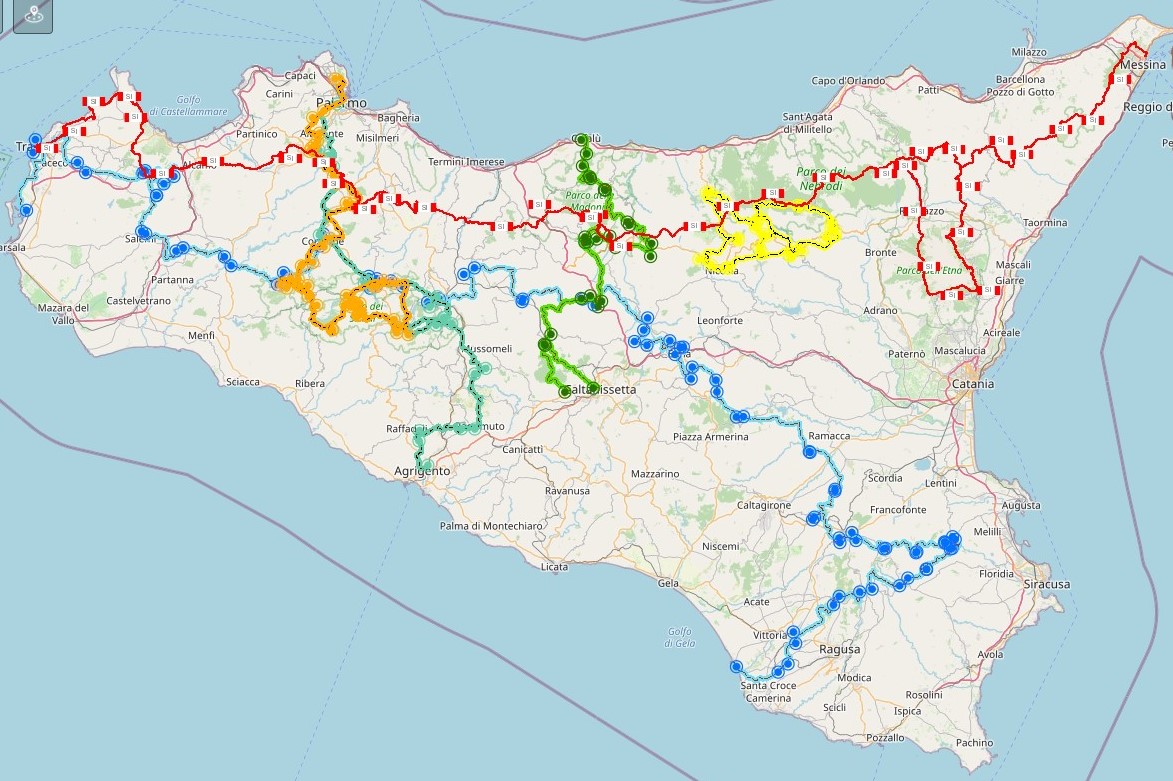The Path of the Thousand
Detail
The Path of the Thousand, inspired by Garibaldi’s Expedition, retraces the last ten days of Garibaldi’s epic in Sicily.
The Path of the Thousand crosses Garibaldi’s “places” in Sicily in 10 stages if one opts for the long variant and 7 if one chooses the short variant, starting from Monreale and reaching the city of Palermo.
With the exception of short urban stretches in the villages, the Path of the Thousand runs almost entirely through mountainous and hilly areas, with dense woods alternating with pastures, arable areas, vineyards, olive groves and citrus orchards until it reaches Palermo’s Conca d’Oro, for a slow journey that unites History with a capital “S” with nature.
After visiting Monreale (PA), with its famous Cathedral of Santa Maria La Nuova, part of the UNESCO World Heritage “Arab-Norman Palermo and the Cathedrals of Cefalù and Monreale” circuit, we enter the coniferous forest that leads to the next stages, almost all naturalistic, linked to Garibaldi’s battles and refuges.
Some of the stages of the Path of the Thousand fall within the Nature Reserve Bosco della Ficuzza, Rocca Busambra, Bosco del Cappelliere and Gorgo del Drago that, in addition to Monreale, includes the municipalities of Corleone, Godrano, Marineo and Mezzojuso.
The wooded territory of the first two municipalities, the sixth and seventh stages of the Path of the Thousand, offers some unmissable sights: the Real Casina di Caccia di Ficuzza, the summer residence of King Ferdinand III of Sicily, the Gorgo del Drago, the Peschiera dei Borboni, the Pulpito del Re and the Laghetti Coda di Riccio (Godrano).
The Marineo and Mezzojuso stops, on the other hand, reveal the charm of their respective historic centres. The first, pays homage to Garibaldi and his expedition with the Corso dei Mille, along which the Red Shirts paraded; the second, tells its story of arbëreshë (Italo-Albanian) origins through customs, language, traditions and Greek-Orthodox rites, and is not by chance called “The Athens of the Albanian Colonies”. In the revolt against the Bourbons (1848-1860), Mezzojuso was among the main organisational centres, and later hosted Garibaldi from 2 to 4 August 1862.
The final stop on the Path of the Thousand, Palermo, a city liberated (or conquered, depending on how one interprets Garibaldi’s story) on 27 May 1860. Among the “Garibaldian places” in the city, not to be missed is the Garden of Villa Garibaldi, in the historic Kalsa district, built to celebrate the Unification of Italy and the new heroes with busts and sculptures.
Find out more about the Path of the Thousand.
Regional web map of paths and routes for soft mobility realised by LabGis Osservatorio Turistico della Regione Sicilia, in collaboration with FIAB Sicilia and CAI Sicilia.
Share this content!
AROUND







